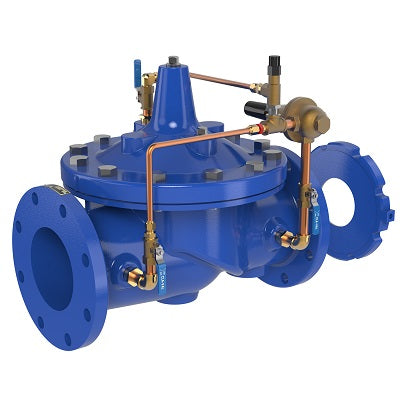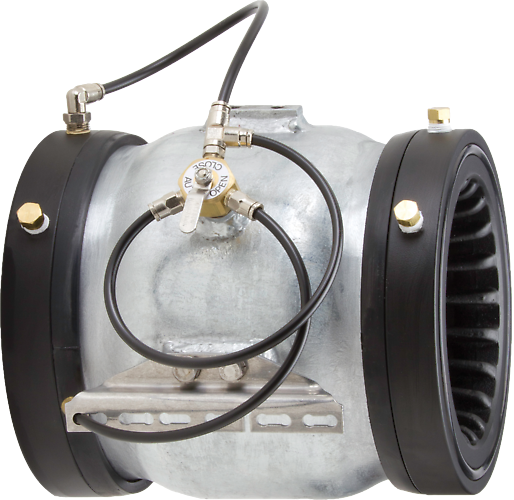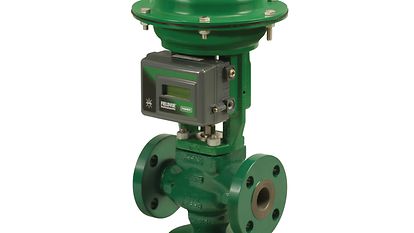How Control Valves Influence Power Performance in Industrial Settings
How Control Valves Influence Power Performance in Industrial Settings
Blog Article
Achieve Seamless Integration and Control With High Quality Building Automation Controls
In the world of modern-day structure administration, the importance of top quality building automation controls can not be overstated. As modern technology remains to breakthrough, the assimilation and control of various systems within a building have actually advanced to be much more sophisticated and effective. The seamless operation and tracking of illumination, HVAC, safety, and various other building features have ended up being paramount for improving occupant convenience, energy effectiveness, and total functional efficiency. Nevertheless, the trip towards achieving true assimilation and control is a diverse one, with considerations varying from system compatibility to cybersecurity. Accepting top quality structure automation controls is not simply an issue of ease however a critical crucial for companies intending to enhance their centers' efficiency and sustainability.

Development of Structure Automation Controls
Throughout the past couple of decades, the evolution of constructing automation controls has actually significantly changed the way buildings are taken care of and run. Developing automation systems largely focused on standard functions such as managing ventilation, air, and heating conditioning (COOLING AND HEATING) systems. As technology advanced, these controls have come to be extra sophisticated, allowing for a broader array of structure systems to be incorporated and managed centrally.
The development of developing automation controls has actually seen a change in the direction of even more smart systems that can adjust to changing problems in real-time. This flexibility is essential for optimizing energy efficiency and making sure passenger convenience. Furthermore, contemporary structure automation controls now use functions such as predictive maintenance, remote monitoring, and data analytics, enabling facility supervisors to make data-driven choices to boost structure efficiency.

Benefits of High Quality Combination
The innovation in structure automation manages in the direction of even more smart systems has actually emphasized the considerable benefits of quality assimilation in enhancing building procedures and boosting total effectiveness. Quality integration of building automation controls offers a number of essential advantages. It leads to improved power efficiency by allowing different systems to function with each other seamlessly, guaranteeing ideal efficiency and lowering power wastefulness. Quality integration improves passenger convenience and performance by allowing personalized control over environmental setups like temperature, illumination, and air top quality. This customization can bring about a much more comfy and conducive working or living atmosphere. Furthermore, top quality assimilation simplifies maintenance and repairing processes, as all systems are interconnected and can be kept an eye on and managed from a central interface. This central control also gives far better visibility and understandings into building performance, allowing positive upkeep and optimization strategies. Overall, the advantages of high quality assimilation in structure automation controls are obvious, supplying raised performance, convenience, and functional performance.
Enhanced Customer Experience and Ease Of Access
Enhancing user interaction with building automation regulates through intuitive design and improved accessibility boosts the more helpful hints overall experience for occupants and center supervisors alike. By focusing on user experience, constructing automation systems can end up being a lot more straightforward and effective. Instinctive interfaces, clear navigation, and personalized setups encourage customers to connect with the controls quickly and effectively.
Access attributes play a crucial duty in guaranteeing that all people, including those with impairments, can utilize the building automation manages with ease. Integrating functions such as voice commands, tactile switches, and color-contrasted displays can boost ease of access and make the controls a lot more inclusive.
Moreover, enhanced user experience leads to higher customer contentment, enhanced performance, and better decision-making. Occupants can important source readjust environmental settings according to their preferences, while center supervisors can effectively manage and keep an eye on building systems - control valves. On the whole, prioritizing individual experience and availability in building automation regulates adds to an extra smooth and effective structure setting for all stakeholders involved
Sustainable Practices With Automation

Furthermore, automation can facilitate the integration of eco-friendly energy resources such as solar panels or wind generators into building procedures. Through automation, buildings can line up with modern-day sustainability goals and add to a greener future.
Future Trends in Building Control Solution
In anticipation of advancing and progressing innovations sustainability techniques, the trajectory of structure control systems is poised to welcome innovative services and transformative strategies. One noticeable pattern forming the future of building control systems is the enhanced combination of Expert system (AI) and machine learning. These innovations allow structures to Go Here adapt in real-time to altering conditions, maximizing power usage and improving comfort for occupants. Additionally, the Net of Points (IoT) is changing structure control systems by attaching sensors and tools to boost and improve operations effectiveness.
An additional key pattern is the focus on cybersecurity measures to safeguard versus potential hazards to building automation systems. As structures become a lot more interconnected, making sure durable cybersecurity procedures will be necessary to guard delicate data and protect against unauthorized gain access to.
In addition, the change towards cloud-based platforms is gaining momentum, permitting centralized control and remote access to structure systems. This promotes much easier monitoring, maintenance, and updates, improving the general efficiency and versatility of structure control systems. As innovation proceeds to advance, these fads are anticipated to form the future landscape of building automation controls, driving development and sustainability in the built setting.
Verdict
Future trends in structure control systems are most likely to concentrate on further boosting automation capabilities for boosted power performance and total performance. It is crucial for structure owners and drivers to focus on the fostering of high quality building automation controls to enhance structure procedures and achieve long-lasting sustainability goals.
In the realm of modern-day building administration, the relevance of quality building automation controls can not be overemphasized. Generally, the development of building automation manages continues to drive development in the structure administration sector, providing new opportunities for creating smarter and more lasting buildings.
The advancement in structure automation manages in the direction of more smart systems has actually underscored the significant benefits of top quality combination in optimizing structure procedures and boosting total efficiency. Overall, focusing on individual experience and ease of access in structure automation manages contributes to an extra smooth and efficient building atmosphere for all stakeholders involved.
It is vital for building proprietors and operators to focus on the adoption of top quality building automation regulates to enhance building procedures and accomplish long-term sustainability objectives. - control valves
Report this page